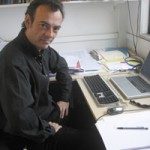Link to Pubmed [PMID] – 2941305
Eur. J. Immunol. 1986 Jun;16(6):685-8
The spleen of adult antigen-free mice contains a sizable proportion (5-15%) of activated cells in all lymphocyte sets, as marked by the membrane expression of immunoglobulins, L3T4 and Lyt-2 antigens. The frequency of activated cells is very high in early post-natal life, and reaches adult levels by 6 weeks of age when it is comparable to that observed in healthy unmanipulated mice raised in conventional conditions. The effector B cell compartment is quantitatively similar in antigen-free mice and specific pathogen-free mice, but the former is deficient in isotype diversification, since IgG- and IgA-secreting cells are drastically reduced. The effector T cell compartment is slightly reduced in number, but is equally competent in providing help or suppression of syngeneic B cells. The results indicate the existence of a compartment of the immune system displaying autonomous self-determined activity which is predominant early in life. This compartment, physically localized to the spleen, appears to be distinct from an antigen-dependent compartment which is essential for the development of peripheral lymphoid organs draining sites of “natural” environmental immunization.
